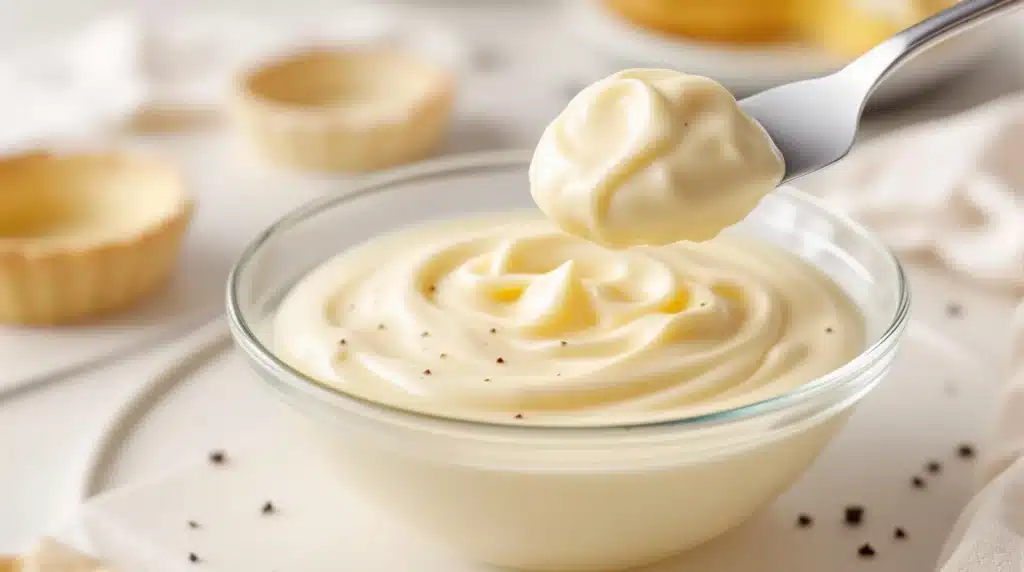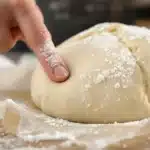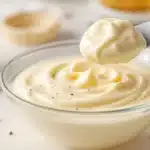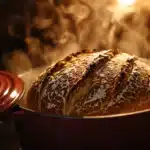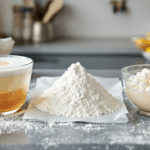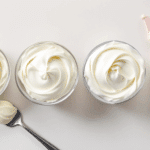Imagine the quintessential fruit tart, its glossy berries nestled in a rich, cool, vanilla-scented bed. Picture biting into a crisp éclair or a delicate cream puff, yielding to a luscious, smooth filling. That delectable substance at the heart of so many classic desserts is often pastry cream, known in French kitchens as crème pâtissière. It’s a fundamental building block in the pastry arts, a versatile custard that provides richness, flavor, and structure.
Making pastry cream seems straightforward – it’s essentially a thickened custard – yet it’s notorious for tripping up even experienced bakers. Common pitfalls include lumps, a thin or watery consistency, an unpleasant starchy aftertaste, or the dreaded scrambled egg scenario. Achieving that perfectly smooth, luxuriously thick, yet delicately creamy texture requires not just following a recipe, but understanding the role of each ingredient and mastering a few key techniques. Let’s unlock the secrets to consistently perfect pastry cream, the silky foundation for countless elegant treats.
What is Pastry Cream (Crème Pâtissière)?
Pastry cream is a rich, cooked custard that is thickened primarily with starch (like cornstarch or flour) in addition to egg yolks. Unlike its runnier cousin, crème anglaise (which is only thickened with egg yolks and typically used as a sauce), crème pâtissière is cooked until quite thick, allowing it to hold its shape when cooled.
Its Role and Uses: It’s incredibly versatile and forms the heart of many beloved pastries:
- Filling for éclairs and cream puffs (choux pastry)
- Base layer for fresh fruit tarts
- Filling for Boston cream pie and donuts
- Component in mille-feuille (Napoleons)
- Base for other creams, such as Diplomat Cream (crème diplomate, pastry cream lightened with whipped cream) or Mousseline Cream (crème mousseline, pastry cream enriched with more butter).
The Texture Goal: The ideal pastry cream is silky smooth on the tongue, completely free of lumps. It should be thick enough to pipe and hold its shape when cold, yet remain creamy and tender, not stiff or rubbery. The flavor should be rich and balanced, typically highlighting vanilla or other added flavorings.
Deconstructing the Cream: Key Ingredients & Their Roles
Understanding what each component does is key to controlling the outcome:
- Milk (Usually Whole): Forms the liquid base of the custard, providing moisture and contributing richness, especially when using whole milk (which is highly recommended for the best flavor and texture). Low-fat milk can result in a less rich, thinner cream.
- Egg Yolks: These are workhorses! They contribute significant richness (from fat), flavor, color (that lovely yellow hue), and act as emulsifiers (thanks to lecithin), helping to create a smooth blend. The proteins in yolks also coagulate upon heating, adding to the thickening power alongside the starch. Using only yolks, rather than whole eggs, results in a much richer, more classic pastry cream.
- Sugar (Granulated): Primarily provides sweetness. It also plays a technical role by slightly raising the temperature at which egg proteins coagulate, giving you a small buffer against scrambling during the heating process when whisked with the yolks first. It also contributes to the final texture.
- Starch (Cornstarch and/or Flour): This is the primary thickening agent that differentiates pastry cream from crème anglaise. When starch granules are heated in the presence of liquid, they absorb water, swell significantly (a process called gelatinization), and disrupt the flow of water molecules, causing the mixture to thicken.
- Cornstarch (Cornflour in UK/Aus): Produces a more translucent, glossy sheen in the finished cream. It has excellent thickening power but requires reaching a full boil to activate completely. If not fully cooked, it can sometimes leave a slightly starchy taste. It’s also gluten-free.
- All-Purpose Flour: Creates a more opaque, slightly heavier cream compared to cornstarch. It starts thickening at a slightly lower temperature. While effective, using too much flour can result in a pasty or “gluey” texture. Contains gluten.
- Combination: Many pastry chefs use a blend of cornstarch and a small amount of flour to leverage the benefits of both – the gloss and strong thickening of cornstarch combined with the smoother, less potentially starchy feel flour can provide.
- Flavoring (Vanilla is Classic): The most traditional flavoring is vanilla. Using a split vanilla bean, scraping the seeds into the milk, and infusing the pod during heating provides the most complex, authentic flavor. High-quality pure vanilla extract is a good alternative, typically added after cooking to preserve its volatile aroma compounds. Other flavorings like melted chocolate, espresso powder, citrus zest, or liqueurs can also be incorporated.
- Butter (Optional, Added at End): Whisking in a small amount of unsalted butter after the cream comes off the heat adds extra richness, shine, smoothness (mouthfeel), and enhances the overall flavor.
- Salt: A tiny pinch might seem counterintuitive in a sweet cream, but it’s essential for balancing the sweetness and enhancing all the other flavors, making them pop.
The Cooking Process: Steps to Silky Smoothness
Achieving lump-free, perfectly thickened pastry cream relies on careful technique at several key stages. Always have your ingredients measured and tools ready (mise en place) before you begin, as the process moves quickly once heating starts.
- Infuse Flavor (Optional First Step): If using a vanilla bean or citrus zest, combine it with the milk in a medium saucepan. Gently heat the milk over medium heat just until it starts to steam and small bubbles form around the edge – do not let it boil vigorously. Remove from heat, cover, and let it steep for 10-15 minutes to allow the flavors to infuse deeply. Afterwards, remove the vanilla pod or strain out the zest.
- Prepare the Thickening Base: While the milk infuses (or if skipping infusion), in a separate medium-sized, heatproof bowl, whisk together the egg yolks and sugar. Whisk vigorously for a minute or two until the mixture is pale yellow, slightly thickened, and falls from the whisk in a ribbon (this helps dissolve the sugar and stabilize the yolks). Add the starch (cornstarch and/or flour) and the pinch of salt. Whisk thoroughly until the mixture is completely smooth and no lumps of starch remain. Ensuring the starch is fully dispersed now is crucial for preventing lumps later.
- Temper the Eggs (CRITICAL STEP): This gentle process prevents the hot milk from cooking and scrambling the egg yolks upon contact.
- Gently reheat the infused milk (or plain milk if not infusing) until it’s hot and steaming, just barely simmering.
- While whisking the yolk/sugar/starch mixture constantly and vigorously with one hand, use your other hand to very slowly drizzle about half of the hot milk into the yolk mixture in a thin, steady stream. Keep whisking the entire time! This gradually raises the temperature of the yolk mixture without shocking and cooking the eggs. The mixture should feel noticeably warm.
- Once about half the milk is incorporated, stop pouring. Pour the warmed yolk mixture back into the saucepan containing the remaining hot milk.
- Cook and Thicken: Immediately place the saucepan over medium heat. Whisk continuously, vigorously, and thoroughly, making sure to constantly scrape the bottom and corners of the pan where the mixture can easily scorch or form lumps. The mixture will gradually heat up and start to thicken.
- Boil Briefly (The Essential Starch-Cooking Step): As the mixture thickens, it will eventually come to a gentle boil (you’ll see thick bubbles plopping at the surface). Once it reaches this boiling point, continue whisking vigorously while maintaining a gentle boil for 1 to 2 full minutes. This step is absolutely VITAL! Boiling is necessary to fully cook the starch granules, activate their maximum thickening power, and eliminate any potential raw, starchy flavor. Don’t be afraid of this boil – keep whisking hard! The cream should become very thick, like pudding.
- Finishing Touches (Off-Heat): Immediately remove the saucepan from the heat. If using vanilla extract, whisk it in now (adding it off-heat preserves its flavor). If enriching with unsalted butter, add it now in small pieces, whisking until each piece is fully melted and incorporated before adding the next. The cream should look smooth and glossy.
- Strain for Guaranteed Smoothness: Pour the hot pastry cream through a fine-mesh sieve set over a clean bowl or shallow dish. This is your insurance policy against any small lumps or tiny bits of cooked egg that might have formed, guaranteeing a perfectly silky smooth final texture. Use your spatula to push the cream through the sieve.
- Chill Properly (Preventing a Skin): To prevent a thick skin from forming on the surface as the cream cools, press a piece of plastic wrap directly onto the entire surface of the hot pastry cream, ensuring there are no air bubbles trapped underneath. Let it cool slightly at room temperature, then transfer to the refrigerator to chill thoroughly for at least 2-4 hours, or preferably overnight, until completely cold and firmly set before using.
Troubleshooting Common Pastry Cream Problems
Even with care, things can sometimes go awry. Here’s how to fix or prevent common issues:
- Problem: Lumpy Pastry Cream
- Causes: Starch wasn’t fully dissolved in the yolk mixture; hot milk was added too quickly during tempering (bits of scrambled egg); didn’t whisk constantly/thoroughly during cooking (scorched bits or starch clumps formed).
- Fix: Strain it! Pouring through a fine-mesh sieve is the best fix and should always be done anyway. If it’s extremely lumpy, you might try carefully blending with an immersion blender (though this can sometimes affect texture) or, sadly, starting over might be best. Prevention: Whisk starch well into yolks, temper slowly, whisk non-stop during cooking.
- Problem: Thin or Runny Pastry Cream
- Causes: Most likely cause is not boiling it long enough after it thickened (starch wasn’t fully cooked/activated). Could also be inaccurate measurement of starch or liquid.
- Fix: Difficult to fix once cold. If you realize it’s too thin while still hot, you could try cooking and boiling for longer (whisking constantly). Otherwise, prevention is key: Ensure that crucial 1-2 minute boil while whisking vigorously. Double-check measurements next time.
- Problem: Scrambled Egg Texture or Eggy Taste
- Causes: Tempering failed – hot milk hit the yolks too quickly and cooked them. Or, cooked over too high heat without constant whisking.
- Fix: Unfortunately, there’s no fixing scrambled eggs in pastry cream. You’ll need to discard and start over. Prevention: Temper very slowly with constant whisking. Control the heat (medium is usually best) and never stop whisking while cooking.
- Problem: Starchy or Floury Taste
- Causes: Undercooked starch – the cream didn’t boil sufficiently after thickening.
- Fix: Prevention only. Ensure you achieve that vigorous 1-2 minute boil while whisking constantly to fully cook the starch.
- Problem: Skin Formed on Top During Chilling
- Causes: Failed to press plastic wrap directly onto the surface. Air contact caused proteins/starches to dry out.
- Fix: You can try to carefully peel off the skin, but it’s often difficult to remove completely. Whisking the chilled cream vigorously might break it up somewhat. Prevention: Always press plastic wrap directly onto the entire surface before chilling.
Tips for Pastry Cream Perfection
- Quality Counts: Use whole milk (not low-fat), fresh egg yolks, and pure vanilla extract or a real vanilla bean for the best flavor and texture.
- Mise en Place: Have absolutely everything measured out and ready before you start heating the milk. The process demands your attention once cooking begins.
- Whisk, Whisk, Whisk! Constant, vigorous whisking, especially reaching into the corners and across the bottom of the saucepan, is non-negotiable to prevent scorching and lumps.
- Embrace the Boil: Don’t pull it off the heat as soon as it thickens. That 1-2 minute boil while whisking is essential.
- Strain Religiously: It takes only a few seconds and guarantees ultimate smoothness.
- Chill Completely: Pastry cream needs several hours (or overnight) in the fridge to become fully cold, set, and reach its final texture before you use it for filling.
- Flavor Fun: Once you’ve mastered the basic vanilla version, play around! Infuse milk with coffee beans or citrus zest. Whisk in melted high-quality chocolate, instant espresso powder, fruit purées (adjust starch slightly if adding lots of liquid), or a splash of liqueur at the end (off-heat).
Conclusion: The Foundation of Elegance
Crème Pâtissière, or pastry cream, is more than just a filling; it’s a fundamental component that defines countless classic pastries. Its rich flavor and smooth, thick texture provide the perfect counterpoint to crisp tart shells, airy choux pastry, or tender cake layers. While seemingly simple, achieving that perfect silky consistency requires understanding the roles of milk, yolks, sugar, and starch, and mastering the crucial techniques of tempering the eggs correctly and boiling the starch fully. By paying attention to detail, whisking diligently, and chilling properly, you can confidently banish lumps and achieve flawless pastry cream every time, laying a delicious and elegant foundation for your pastry creations.

